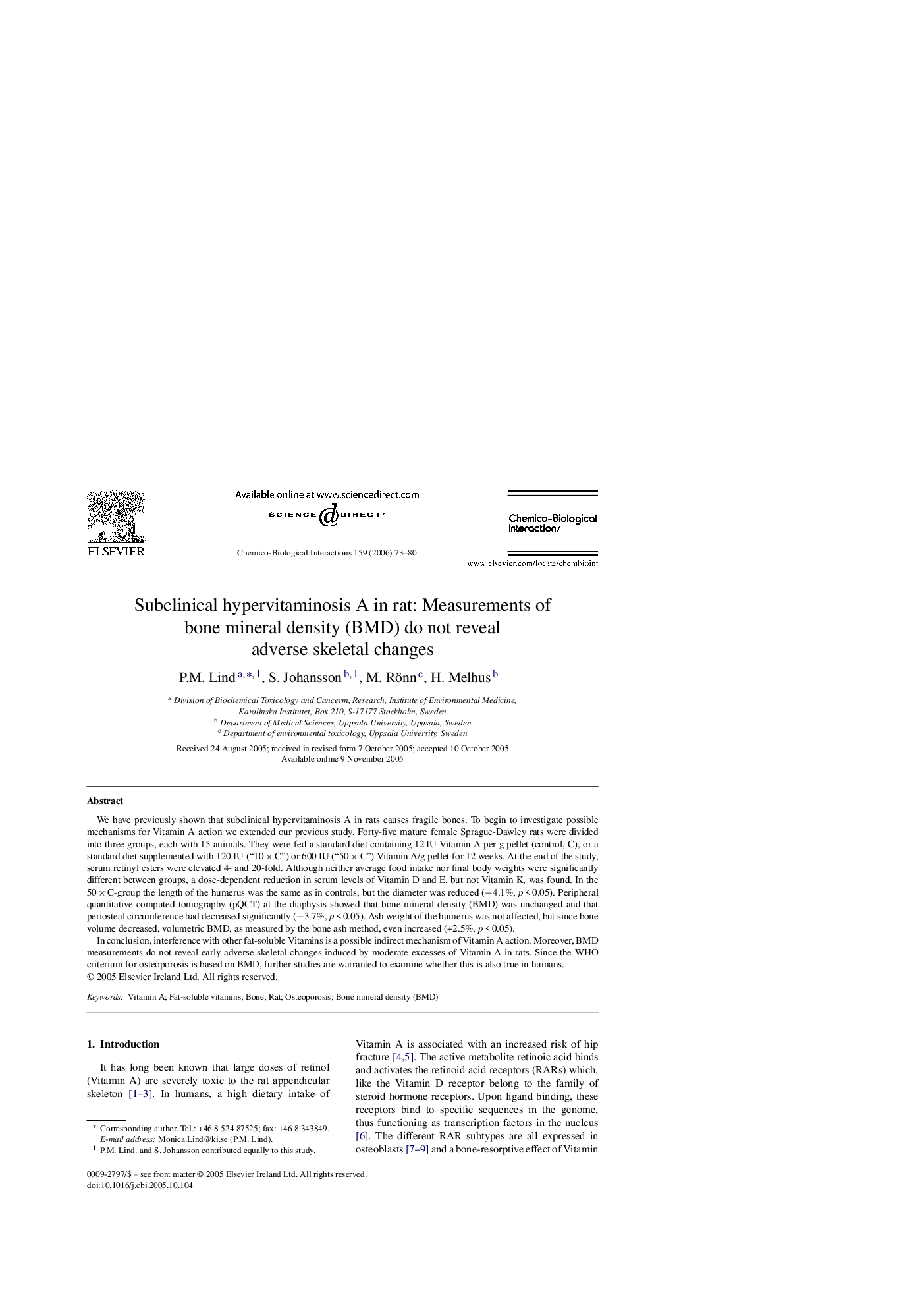| Article ID | Journal | Published Year | Pages | File Type |
|---|---|---|---|---|
| 2582264 | Chemico-Biological Interactions | 2006 | 8 Pages |
We have previously shown that subclinical hypervitaminosis A in rats causes fragile bones. To begin to investigate possible mechanisms for Vitamin A action we extended our previous study. Forty-five mature female Sprague-Dawley rats were divided into three groups, each with 15 animals. They were fed a standard diet containing 12 IU Vitamin A per g pellet (control, C), or a standard diet supplemented with 120 IU (“10 × C”) or 600 IU (“50 × C”) Vitamin A/g pellet for 12 weeks. At the end of the study, serum retinyl esters were elevated 4- and 20-fold. Although neither average food intake nor final body weights were significantly different between groups, a dose-dependent reduction in serum levels of Vitamin D and E, but not Vitamin K, was found. In the 50 × C-group the length of the humerus was the same as in controls, but the diameter was reduced (−4.1%, p < 0.05). Peripheral quantitative computed tomography (pQCT) at the diaphysis showed that bone mineral density (BMD) was unchanged and that periosteal circumference had decreased significantly (−3.7%, p < 0.05). Ash weight of the humerus was not affected, but since bone volume decreased, volumetric BMD, as measured by the bone ash method, even increased (+2.5%, p < 0.05).In conclusion, interference with other fat-soluble Vitamins is a possible indirect mechanism of Vitamin A action. Moreover, BMD measurements do not reveal early adverse skeletal changes induced by moderate excesses of Vitamin A in rats. Since the WHO criterium for osteoporosis is based on BMD, further studies are warranted to examine whether this is also true in humans.
